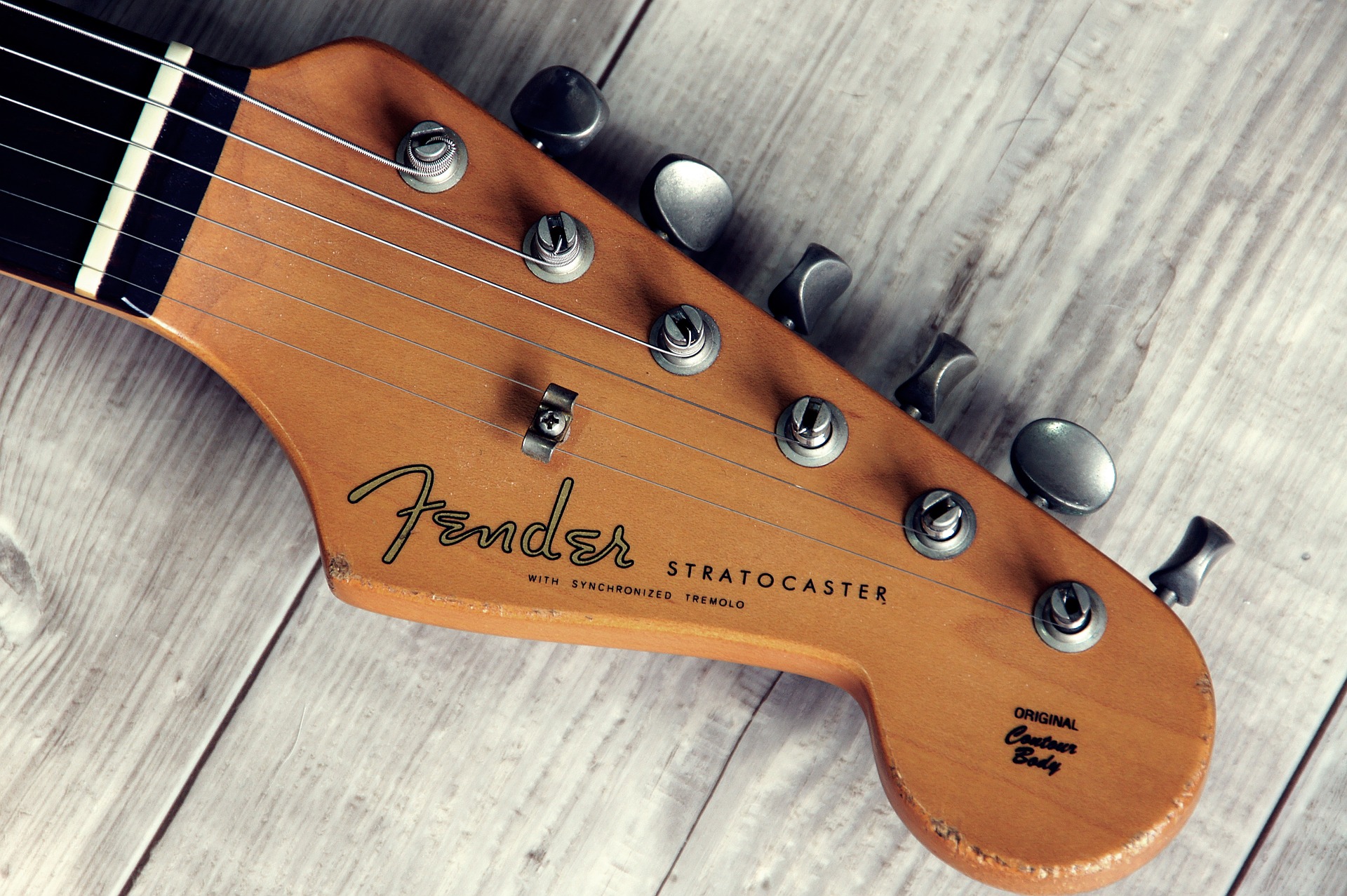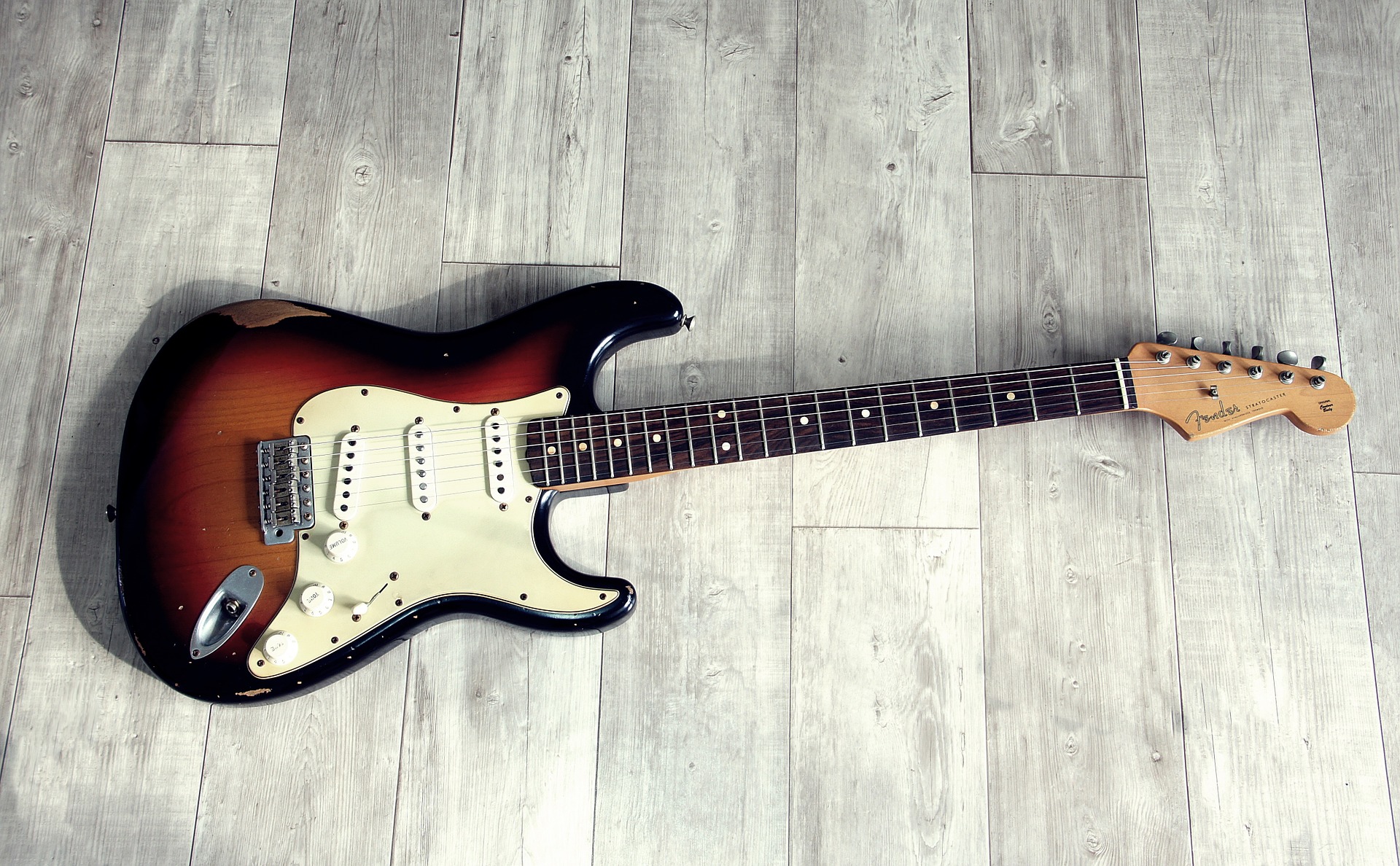The Fender Stratocaster is a model of electric guitar designed from 1952 into 1954 by Leo Fender, Bill Carson and George Fullerton, and completed by Freddie Tavares. The Fender Musical Instruments Corporation has continuously manufactured the Stratocaster from 1954 to the present. It is a double-cutaway guitar, with an extended top "horn" shape for balance like the Precision Bass guitar. Along with the Gibson Les Paul and Fender Telecaster, it is one of the most-often emulated electric guitar shapes. "Stratocaster" and "Strat" are trademark terms belonging to Fender. Guitars that duplicate the Stratocaster by other manufacturers are usually called S-Type or ST-type guitars.

The Stratocaster was the first Fender guitar to feature three pickups and a spring tension vibrato system, as well as being the first Fender with a contoured body. The Stratocaster's sleek, contoured body shape (officially referred to by Fender as the "Original Contour Body") differed from the flat, squared edge design of the Telecaster. The Stratocaster's double cutaways allowed players easier access to higher positions on the neck.
The first model offered for sale was the 1954 Fender Stratocaster.The design featured a solid, deeply contoured ash body, a 21-fret one-piece maple neck with black dot inlays, and Kluson SafeTiPost tuning machines. The color was originally a two-color, dark brown-to-golden yellow sunburst pattern, although custom color guitars were produced (most famously[according to whom?] Eldon Shamblin's gold Stratocaster, dated 6/1954).
The first models had a serial number imprinted on the Bakelite back plate. After mid-1954, the four-digit serial number was stamped into the steel heel plate.
 Sunburst body color
Sunburst body color
In 1956, Fender began using alder for sunburst and most custom-color Stratocaster bodies. Ash needed grain filler and sanding blocks for contour sanding, though it was still used on translucent blonde instruments.
In 1960, the available custom colors were standardized with a paint chip chart, many of which were Duco automobile lacquer colors from DuPont available at an additional 5% cost. Inter-departmental Dupont support research provided a flexible basecoat for their wood applications.
A single-ply, eight-screw hole white pickguard (changed to an 11-hole three-ply in late 1959) held all electronic components except the recessed jack plate, facilitating assembly.
After 1965, the Fender company, under the control of CBS Instruments, saw a drop in quality control meaning lower quality build and lower grade instruments for customers. Despite this, the popularity of Jimi Hendrix in the late 1960's saw a resurgence in sales due to his fondness for the instrument.
However, after 1974, the increased production of lower-quality instruments by the company saw the advent of the Japanese entering the market to produce replicas of the pre-1966 Stratocasters.
The "quacky" or "doinky" tone of the middle and bridge pickups, popularized by players such as Jimi Hendrix, Stevie Ray Vaughan, David Gilmour, Rory Gallagher, Mark Knopfler, Bob Dylan, Eric Johnson, Nile Rodgers, Scott Thurston, Ronnie Wood, John Mayer, Ed King, Eric Clapton as a solo artist and Robert Cray, can be obtained by using the pickup selector in positions 2 and 4.
This setting's characteristic tone is not caused by any electronic phenomenon—early Stratocasters used identical pickups for all positions. This "in between" tone is caused by phase cancellation due to the physical position of the pickups along the vibrating string. The neck and middle pickups are each wired to a tone control that incorporates a single, shared tone capacitor, whereas the bridge pickup, which is slanted towards the high strings for a more trebly sound, has no tone control for maximum brightness.
On many modern Stratocasters, the first tone control affects the neck pickup; the second tone control affects the middle and bridge pickups; on some Artist Series models (Eric Clapton and Buddy Guy signature guitars), the first tone control is a presence circuit that cuts or boosts treble and bass frequencies, affecting all the pickups; the second tone control is an active midrange booster that boosts the midrange frequencies up to 25 dB (12 dB on certain models) to produce a fatter humbucker-like sound.
tags: Guitars